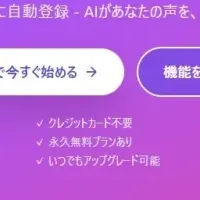
The Rise of In-Car Wi-Fi: Transforming Connectivity with AI from 2024 to 2028
The Rise of In-Car Wi-Fi: Transforming Connectivity with AI from 2024 to 2028
The in-car Wi-Fi market is set for explosive growth, with estimates pointing towards an increase of USD 270.54 billion from 2024 to 2028. This remarkable leap is driven by a variety of data plans tailored to individual needs and significant advancements in artificial intelligence (AI). The anticipated compound annual growth rate (CAGR) stands at an impressive 49.01% during this period, reflecting the sector's burgeoning potential.
The State of the Market
According to the market research conducted by Technavio, the in-car Wi-Fi industry benefits from a rapidly evolving landscape that aims to cater to the high demand for connectivity while on the move. Various technologies such as 3G, 4G, and upcoming 5G implementations play a critical role in enhancing the effectiveness and appeal of in-car internet systems. Notably, the expansion from 3G to 4G laid the groundwork for various smartphone technologies, while 5G is expected to further elevate the speed and reliability of online services.
Growth Drivers
The surge in demand for constant internet access during travel has propelled OEMs (Original Equipment Manufacturers) to innovate and enhance connectivity features in vehicles. Telecommunication giants, such as Verizon and T-Mobile, are at the forefront, offering features that include real-time data acquisition from vehicles. This real-time data, emanating from telematics, includes information such as speed, fuel consumption, and navigation details and can add substantial value for mixed stakeholders, including insurance companies and technological developers.
Furthermore, the integration of infotainment systems not only amplifies the driving experience but also facilitates easy updates for navigation and software, making in-car Wi-Fi a coveted feature in modern vehicles. The potential for AI-driven applications in this sector is vast, encompassing everything from enhanced navigation to advanced entertainment systems.
Challenges Ahead
While the prospects appear robust, the in-car Wi-Fi market faces several challenges. Many consumers are reluctant to adopt this technology, primarily due to the prevalence of smartphone hotspots and established data-sharing practices. Additionally, concerns about security and data privacy can deter user engagement and adoption. Car manufacturers must address these concerns by actively involving users during the development stage, ensuring that the solutions meet their expectations for security and usability.
Moreover, maintaining strong signals in moving vehicles poses a logistical challenge, as does ensuring synchronization with diverse devices and operating systems. Balancing cost, performance, and battery consumption in developing these systems will be crucial in appealing to consumers.
Future Prospects
Nevertheless, the in-car Wi-Fi market shows a wealth of opportunities for innovation and expansion. Collaborations between car manufacturers and tech companies are predicted to result in even more advanced connectivity solutions. The market remains fragmented yet dynamic, with key players like Sprint PCS and Cisco Systems actively enhancing their service offerings.
The potential for vehicle-to-vehicle communication and the rise of autonomous driving technology signal a future where in-car Wi-Fi will become increasingly integrated into daily commutes and road trips. Unquestionably, this transformation will redefine traveling in a digital age.
As we approach 2024, staying informed about market trends and technological advancements will be vital for stakeholders across various sectors. Recognizing the shifts engendered by AI and data analytics will allow companies to strategize effectively in this evolving landscape. The in-car Wi-Fi market is indeed one of the most exciting industries to watch in the coming years, representing a vibrant intersection of technology, transportation, and consumer engagement.
Topics Consumer Technology)










【About Using Articles】
You can freely use the title and article content by linking to the page where the article is posted.
※ Images cannot be used.
【About Links】
Links are free to use.